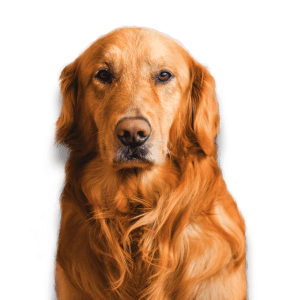
What is it?
Elbow dysplasia is the collective name for a group of degenerative diseases of the elbow joint. They are the most common causes of front leg lameness in large- and giant-breed dogs. These conditions usually have a genetic cause, although in some cases inappropriate feeding of rapidly growing dogs may also be a factor. Whatever the exact condition, the end result is much the same, with rapid, early development of arthritis in the affected joint (or joints - elbow dysplasia usually affects both front legs, although often one is worse than the other).What causes it?
There are a large number of possible development defects; however, the most common are (in no particular order):
- Fragmented Coronoid Process (FCP), where a small part of bone in the joint, the Coronoid Process, snaps off. This is often caused by Incongruity due to a short radius, where the radius (the bigger of the two forearm bones) is too short, putting abnormal stress on the joint.
- Osteochondrosis dissecans (OCD), where the cartilage that lines the elbow joint cracks and starts to break down. This is associated with overfeeding larger puppies so they grow too fast, but we now know that genetic factors are just as important.
- Ununited Anconeal Process (UAP), where a spur of bone on the olecranon (the point of the elbow) doesn't join to the rest of the bone properly.
Dogs with elbow dysplasia are often also at risk of hip dysplasia
What dogs are at risk?
Elbow Dysplasia is most common in large- and giant breed dogs; however, even medium sized dogs are fairly frequently affected. In many cases, the symptoms won't become apparent until early adult life (2-4 years of age), although the deformity of the joint was present as a puppy - this is due to the abnormally rapid development of arthritis in the affected joints.What are the symptoms?
In most cases, the only symptom is intermittent front limb lameness. It may appear to clear up, and then come back, or even seem to swap legs, but no amount of rest will cure it. Occasionally, the dog may find that their elbow “locks” and cannot be straightened, but most of the time it works OK, it just hurts!How is it diagnosed?
The initial diagnosis is usually by X-rays of the elbow joints. More sophisticated techniques like CT or MRI scan may be useful as well, especially if there are multiple different abnormalities. However, in many cases it is necessary to assess the inside of the joints, and for that, the dog will need to have an arthroscopy, where the vet will look inside the elbow with an endoscope.How can it be treated or managed?
In many cases, by the time the condition has been diagnosed, the underlying problem cannot be repaired. These dogs must simply have their arthritis managed (weight loss, anti-inflammatories, painkillers, physio and hydrotherapy). If there are chips of bone in the joint (“joint mice”), they must be surgically removed. In severe cases, the elbow joints can be surgically replaced with artificial joints.
If the condition is caught early enough, though, it is sometimes possible to repair the underlying problem - for example, by cutting the radius to lengthen it, or severing certain tendons to reduce pressure on the medial coronoid process.